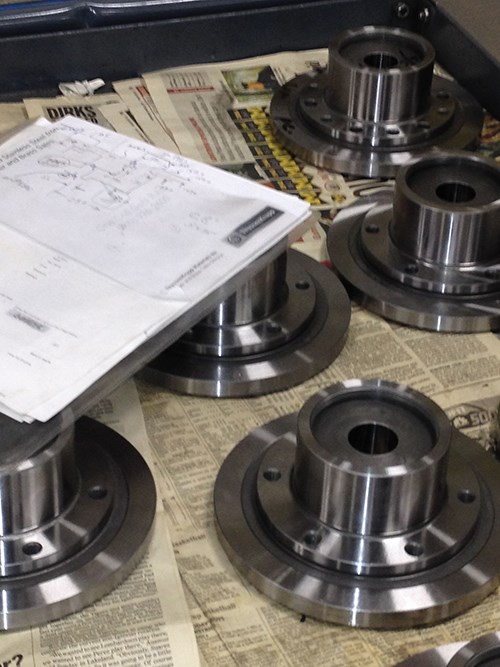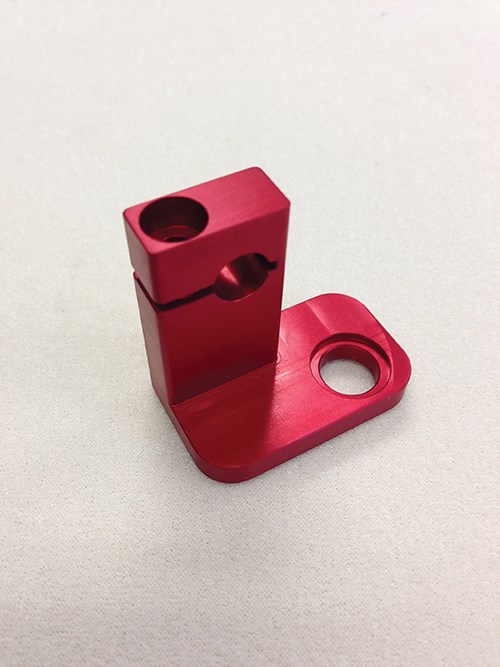Shop Management Software Benefits Small-, Medium-Size Companies
Elite Manufacturing was unknowingly overpricing its bids until the company purchased an ERP software program. Since its installation, the company has seen increased profitability as well as growth.
Share







Autodesk, Inc.
Featured Content
View More
Takumi USA
Featured Content
View More




ECi Software Solutions, Inc.
Featured Content
View MoreThere’s an old story in which the owner of a growing business spends the vast majority of his time chasing paper. He has looked into a software-based shop management solution, but he fears the high costs and steep learning curve associated with it. Instead, he carries on without it, not knowing the true cost of his business. Every day, he loses money and doesn’t even realize it.
This story was all too familiar for Elite Manufacturing, a CNC shop located in White Bear Lake, Minnesota. When the shop discovered that there was a much greater expense associated with only having a rough idea of the cost of a bid, it implemented enterprise resource planning (ERP) software from Realtrac (Livonia, Michigan). The growing company soon improved its overall efficiency and performance, enabling it to increase profitability on every job.
The three seasoned machinists who founded Elite Manufacturing were aware of the larger ERP systems on the market, but they were under the impression that none were built to fit the needs of small- or medium-size manufacturing companies like Elite. Since it was a relatively new company (founded in March 2013), the owners didn’t want to dive into a bloated resource-planning system. It seemed safer to continue using Excel spreadsheets, QuickBooks and a lot of manual entry instead.
“Most ERPs out there are going to run you $20,000 or $30,000 just to get started,” says Paul Fiege, CEO. “That was not going to work for us, but we knew we needed to find something better than what we had.”
It wasn’t until he attended the International Manufacturing Technology Show (IMTS) in 2014 that he learned about Realtrac’s ERP solution, which he decided would be a good fit for the growing machine shop. Job tracking, costing, scheduling and some best practices are built in to quickly improve overall efficiency and performance. The main selling point for Mr. Fiege was that Realtrac’s ERP system is module-based, which means the company can select just the features it needs and add new ones as it grows, he says. It also integrates directly with QuickBooks, so he didn’t have to learn new accounting software. With just one click, the software can produce a job estimate.
This is in sharp contrast to how Elite used to quote a job. Somebody would have to create a new Excel spreadsheet and input setup minutes, runtime minutes, inspection time and costs; populate the front page; and then enter all the data again into QuickBooks. Even a simple purchase order could take an hour or more to complete. With Realtrac, the company can process an order with 10 different part numbers in 15 minutes.
“And much of that time comes from waiting for the printer to catch up,” Mr. Fiege says.
The automated costing and estimating features that are built into Realtrac enable Elite to quote more accurately and win more jobs. In fact, the company used to unknowingly overprice its bids, losing as many as half of them. Now, it wins 80 percent or more because the bids are more accurate and profitable.
Aside from cost concerns, the other barrier to entry for shops considering ERP systems is the learning curve of the software itself. With Realtrac’s quick-start implementation, companies can run jobs quickly with minimal impact on their daily operations. Mr. Fiege received two days of remote training, though he had a job running in the system on day one. With about two weeks of on-demand follow-up, Elite has been running on Realtrac ever since, with no problems and negligible downtime.
“With Realtrac, we can literally go from quoting a job to having it running on the shop floor within minutes,” Mr. Fiege says.
Before implementing the software, Elite would spend at least a day getting a quote out for a bid. Now, Mr. Fiege says he can put half a dozen or more drawings into the system, input the part specs and all the details, and have a quote out in as little as 15 minutes.
With a software-based solution in use, the shop averages 15 to 45 jobs on the floor at any one time, without feeling busy. The shop can also figure out the ROI for each of those jobs or update a customer on their job status in real-time.
“Before we started using Realtrac, I would have to do so much work to figure out if a job was profitable, I often didn’t even do it,” Mr. Fiege says. “We were basically guessing based on machine time and a few other factors. Now I can see everything from materials cost to setup time and everything in between.”
Without the feedback and data available from a software-based job tracking system like Realtrac’s Performance ERP, the average machine shop can’t accurately determine job costs and really ensure they’re making money, he says.
“A lot of these shops are busy all year and assume they’re making money until they look at the year-end books. Unfortunately, that is way too late,” explains Jeremy Klosowski, Realtrac’s director of marketing.
For Elite, a surprising benefit of the ERP software has been how much it is teaching the owners—even with their combined 40 years of experience—about the industry.
“I’m a machinist, not a software guy,” Mr. Fiege says. “In just the few months since we started with Realtrac, we understand more about our entire business than we ever have. It has helped us become an established company and a legitimate player in a very competitive industry.”
Related Content
5 Tips for Running a Profitable Aerospace Shop
Aerospace machining is a demanding and competitive sector of manufacturing, but this shop demonstrates five ways to find aerospace success.
Read MoreContinuous Improvement and New Functionality Are the Name of the Game
Mastercam 2025 incorporates big advancements and small — all based on customer feedback and the company’s commitment to keeping its signature product best in class.
Read MoreERP Provides Smooth Pathway to Data Security
With the CMMC data security standards looming, machine shops serving the defense industry can turn to ERP to keep business moving.
Read MoreThe Power of Practical Demonstrations and Projects
Practical work has served Bridgerland Technical College both in preparing its current students for manufacturing jobs and in appealing to new generations of potential machinists.
Read MoreRead Next
Registration Now Open for the Precision Machining Technology Show (PMTS) 2025
The precision machining industry’s premier event returns to Cleveland, OH, April 1-3.
Read MoreBuilding Out a Foundation for Student Machinists
Autodesk and Haas have teamed up to produce an introductory course for students that covers the basics of CAD, CAM and CNC while providing them with a portfolio part.
Read More5 Rules of Thumb for Buying CNC Machine Tools
Use these tips to carefully plan your machine tool purchases and to avoid regretting your decision later.
Read More
















.png;maxWidth=150)






























